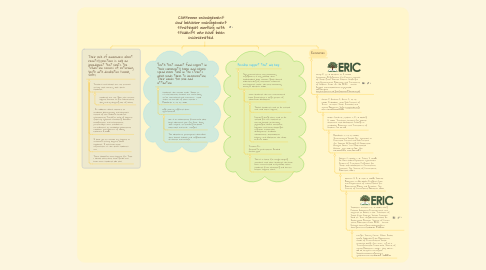
1. Youth that cannot find support in their community, home and schools spend more time in the streets which leads them to incarceration. Their needs for love and attention
1.1. students who receive inade- quate or no instructional services are more likely to be rearrested and reincarcer- ated within 12 months of their release ( Elizabeth, S., et al., 2015).
1.2. High-poverty affects their opportunities.
1.2.1. UDL is an educational framework that helps educators plan for flexi- bility with respect to teaching methods, materials, and tech- nologies.
1.2.2. The adolescent participants described their homes, schools, and neighborhoods as chaotic and unsafe.
2. Their lack of awareness about reentry practices is only an impediment that limits the transition success of returning youth with disabilities (Sarah, 2014).
2.1. Teachers and schools are not trained to help with reentry with these students.
2.1.1. Students are not given the correct support become so far behind that they end up dropping out of school.
2.2. . In addition, issues relevant to academic discontinuity and dropouts, status of the Bedoons, students’ institutional Transfer, lack of support, follow-up systems, counseling, behavior modification, and institutional partnerships were tracked as contributors to recidivism, educational exclusion, and absence of equity (.Hourani, B.,2018).
2.3. I have yet to receive any support or resources to help support these students. I also have little information on who these students are.
2.4. There should be more support for Title 1 schools that don't have funds and have more students like this.
3. Possible support that will help
3.1. They learned that real community engagement is only possible when stakeholders have common goals, shared understanding of outcomes, resources, and supports within the local community (Sarup & Heather, 2014).
3.1.1. Some students who are incarcerated have found that a large portion of them have disabilities.
3.1.1.1. Theses students need to be tested and need extra support.
3.1.1.2. Following things that need to be tested for are related to mental health, personality, physiological issues, emotional- behavior and social challenges, cognitive-intellectual development, academic achievement, victimization history, and substance use Nicole & Anna, 2015)
3.1.2. Trauma In‐ formed PD presentation Revised Version.pptx
3.1.2.1. This is a start for maybe Helping teachers with their students who have been incarcerated and possible other students from escalating and how to better support them.
4. Resources
4.1. Sarup, R. M., & Heather, G. R. (2014). Community Engagement for Reentry Success of Youth from Juvenile Justice: Challenges and Opportunities. Education and Treatment of Children, 37(4) 713-734. ERIC - Search Results tutionalized+reentry+youth& id=EJ1070170 https://files.eric.ed.gov/fulltext/EJ1070170.pdf
4.1.1. Nicole, P., Andrea, F., Anna, F., et al., (2015). Individual- level Risk Factors of Incar- ceration Youth. Remedial and Special Education, 37(3), https://doi.org/ 10.1177/0741932515593383
4.1.1.1. Griller Clark, H., Mathur, S. R., & Helding, B. (2011). Transition services for juvenile detainees with disabilities: Findings on recidivism. Education and Treatment of Children, 34, 511-529.
4.1.1.1.1. Elizabeth, S., et al., (2015). Incarcerated Youths’ Per- spectives on Protective Factors and Risk Factors for Juvenile Offending: A Qualitative Analysis. Ameri- can Public Health Associa- tion, 105(7): 1365– 1371, [10.2105/AJPH. 2014.302228]

